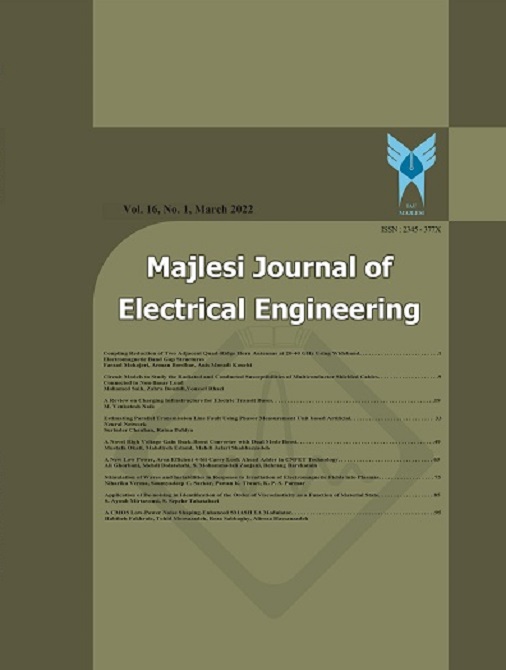Reference
[1] F. Amrane, A. Chaiba, « A novel direct power control for grid-connected doubly fed induction generator based on hybrid artificial intelligent control with space vector modulation, » Rev. Roum. Sci. Techn.-Electrotechn. Et Energ, Vol. 61, No. 3, pp. 263-268, 2016.
[2] J. Mohammadi, S. Vaez-Zadeh, S. Afsharnia, E. Daryabeigi, « A combined vector and direct power control for DFIG-based wind turbines, » IEEE Transactions on Sustainable Energy, Vol. 5, No. 3, 2014.
[3] X. Zhu, S. Liu, Y. Wang, «Second-order sliding-mode control of DFIG-based wind turbines, » IEEE 2014 3rd Renewable Power Generation Conference, pp. 1-6, 24-25 September 2014.
[4] D. Kanimozhi, S. Saravanan, R. Satheeshkumar, «Analysis of doubly fed induction generator connected matrix converter in wind farm, » International Journal of Engineering Research & Technology, Vol. 2, pp. 3981-3988, 2013.
[5] F. Bishwang, T. Guanzheng, F. Shaosheng, «Comparison of three different 2-D space vector PWM algorithms and their FPGA implementations, » Journal of Power Technologies, Vol. 94, No. 3, pp. 176-189, 2014.
[6] M. Gaballah, M. El-Bardini, S. Sharaf, M. Mabrouk, «Implementation of space vector-PWM for driving two level voltage source inverters, » Journal of Engineering Sciences, Vol. 39, No. 4, pp. 871-884, 2011.
[7] H. Obdan, M. C. Ozkilic, «Performance Comparison of 2-level and 3-level converters in a wind energy conversion system, » Rev. Roum. Sci. Techn.-Electrotechn. Et Energ, Vol. 61, No. 4, pp. 388-393, 2016.
[8] E. E. M. Mohamed, M. A. Sayed, « Matrix converters and three-phase inverters fed linear induction motor drives-performance compare, » Ain Shams Engineering Journal, Vol. 2, pp. 1-12, 2016.
[9] H. Benbouhenni, Z. Boudjema, A. Belaidi, « Direct vector control of a DFIG supplied by an intelligent SVM inverter for wind turbine system, » Iranian Journal of Electrical and Electronic Engineering, In Press, 2018.
[10] H. Benbouhenni, Z. Boudjema, A. Belaidi, «Neuro-second order sliding mode control of a DFIG supplied by a two-level NSVM inverter for wind turbine system, » Iranian Journal of Electrical and Electronic Engineering, In Press, 2018.
[11] M. Hasni, Z. Mancer, S. Mekhtoub, S. Bacha, « Parametric identification of the doubly fed induction machine, » Energy Procedia, Vol. 18, pp. 177-186, 2012.
[12] E. Bounadja, A. Djahbar, Z. Boudjema, «Variable structure control of a doubly fed induction generator for wind energy conversion systems, » Energy Procedia, Vol. 50, pp. 999-1007, 2014.
[13] Z. Boudjema, A. Meroufel, E. Bounadja, Y. Djerriri, « Non linear control of a doubly fed induction generator supplied by a matrix converter for wind energy conversion systems, » Journal of Electrical Engineering, Vol. 14, No. 2, 2014.
[14] K. Kerrouche, A. Mezouar, Kh. Belkacem, « Decoupled control of doubly fed induction generator by vector control for wind energy conversion system, » Energy Procedia, Vol. 42, pp. 239-248, 2013.
[15] A. Medjber, A. Moualdia, A. Mellit, M. A. Guessoum, « Comparative study between direct and indirect vector control applied to a wind turbine equipped with a double-fed asynchronous machine article, » International Journal of Renewable Energy Research, Vol. 3, No. 1, pp. 88-93, 2013.
[16] B. Karima, A. Boukhelifa, « Output power control of a variable wind energy conversion system, » Rev. Roum. Sci. Techn.-Electrotechn. Et Energ, Vol. 62, No. 2, pp. 197-202, 2017.

